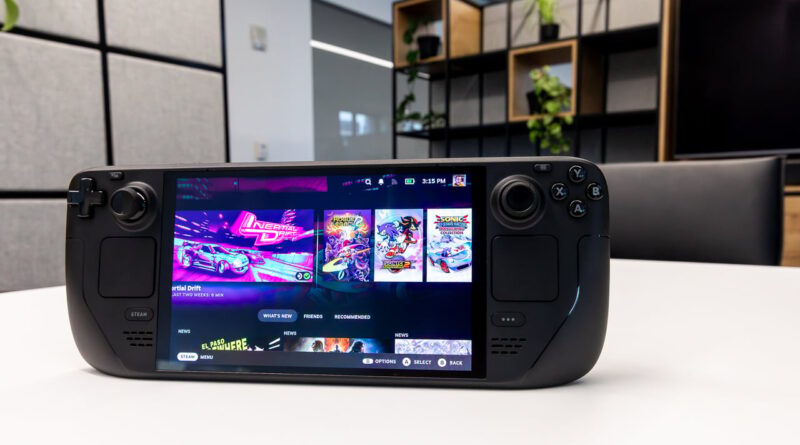I tested Steam Deck OLED for 3 weeks — it’s more than just a display upgrade
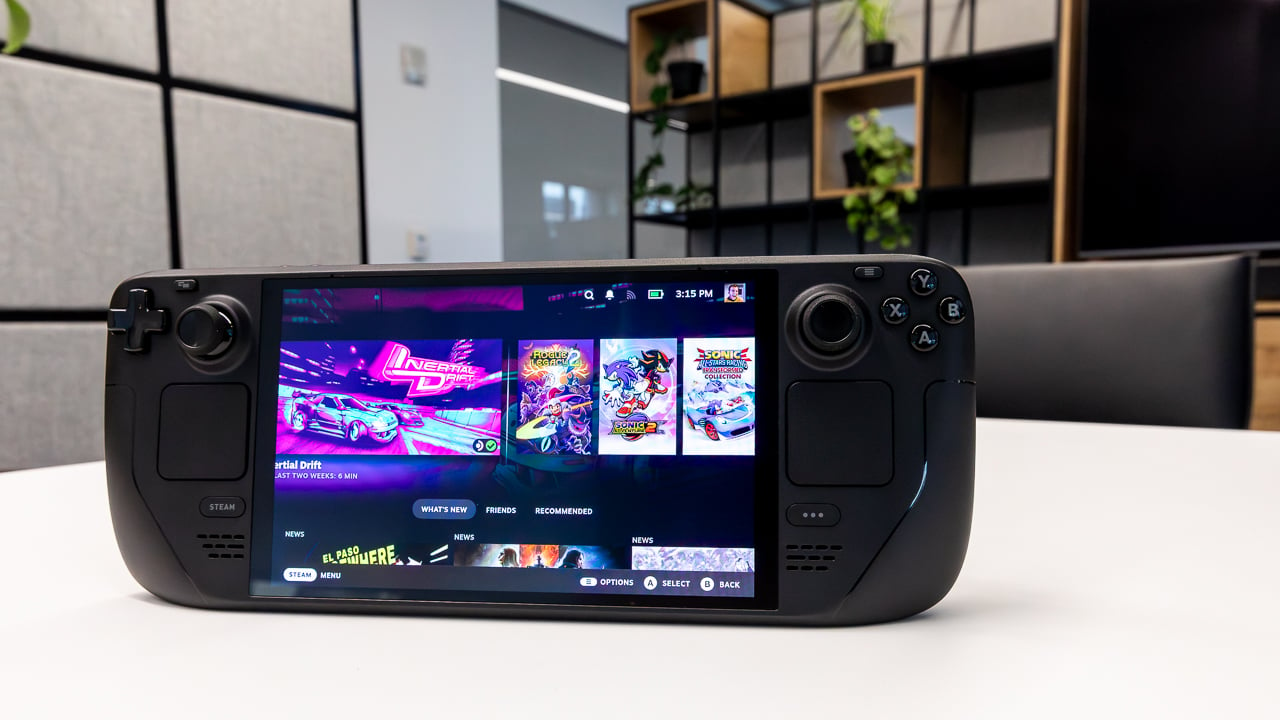
Valve did something nearly unthinkable with the new Steam Deck OLED: It made the original model, released just a year and a half ago, obsolete.
Steam Deck OLED is a misleading product name — it’s more than just the same device as the OG with a new display slapped on. Valve’s new portable PC has (slightly) faster performance, a better battery and a quieter fan to go on top of the self-evidently excellent OLED display.
While there are still some philosophical reasons why one may prefer the also-great Lenovo Legion Go, as a lifelong console gamer, the Steam Deck OLED leverages all of those improvements to become my preferred portal into PC gaming.
Steam Deck OLED price
The Steam Deck OLED Valve sent to Mashable costs $ 549. It comes with the following specs
-
AMD Sephiroth chip
-
16GB of memory
-
512GB of SSD storage
-
1280 x 800-pixel HDR OLED display
-
7.4-inch display
If you to bump your storage to 1TB, that’ll set you back $ 649. For reference, the original Steam Deck, packed with 256GB of storage, costs $ 399.
What I love about Steam Deck OLED
The display is gorgeous
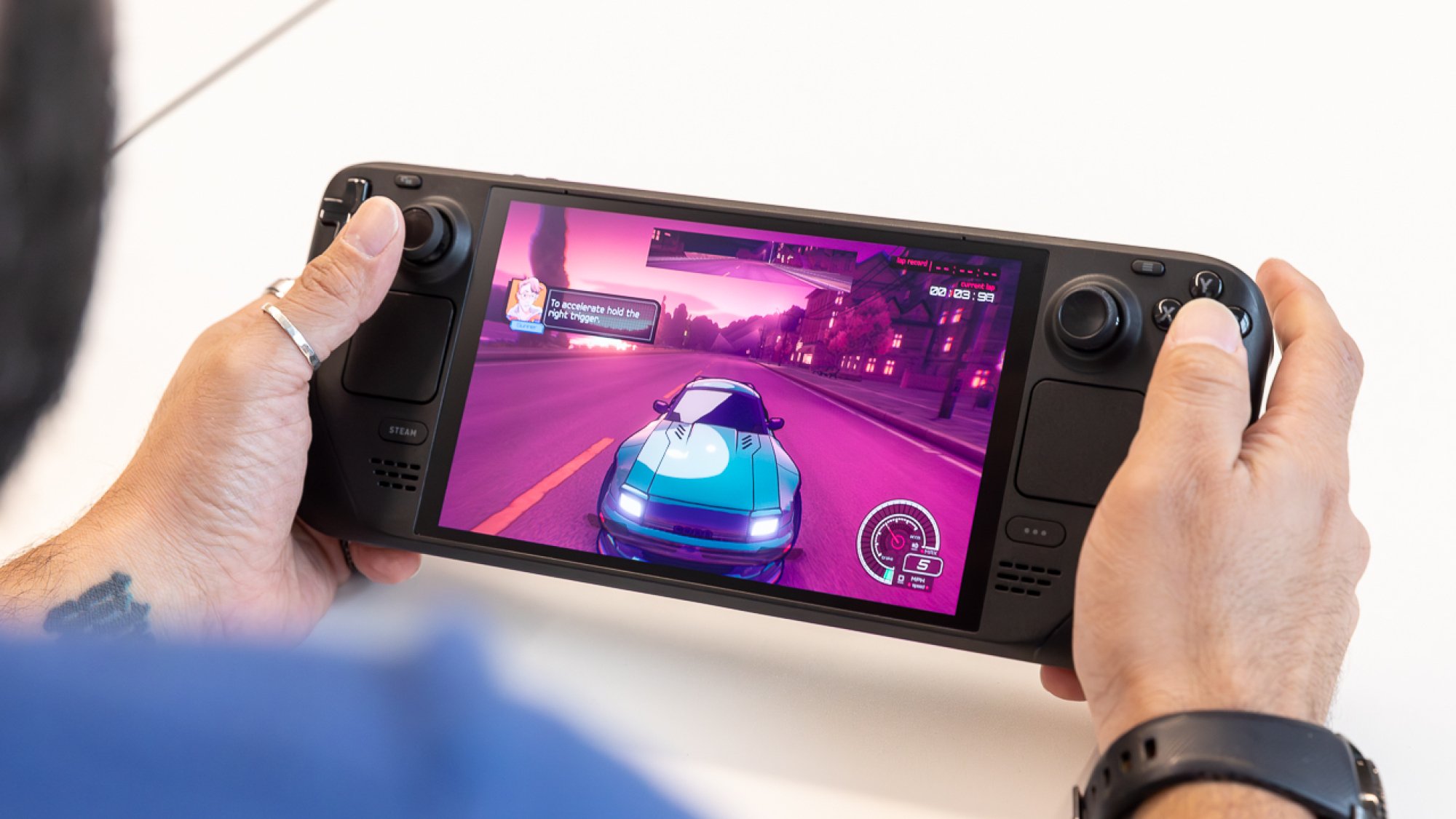
While the new screen on Steam Deck OLED isn’t the only improvement by a long shot, it’s the one that’s in the name, so let’s start with that. Put simply, it’s awesome.
Valve didn’t just transfer the same display specs from last year’s LCD model into an OLED form. Instead, the screen is better in almost every way. Its 7.4-inch size mildly improves on the 7-inch dimensions of the original (while retaining the same 800p resolution). Crucially, the original model’s 60Hz top refresh rate has been expanded to 90Hz, enabling gameplay of up to 90 frames per second for games that support it.
While I didn’t have an LCD Steam Deck on hand for direct comparison’s sake, the advantages that OLED has over LCD are well-documented by now. On an OLED display, every individual pixel can illuminate individually, while LCD displays have a single backlight behind everything. Deeper black levels and better contrast produce a more handsome image on OLED screens, especially in titles that support HDR. It may not be a revolutionary enhancement, but it’s an improvement nonetheless.
A bump in resolution to go with the upgraded screen size would’ve been nice, but even at 800p, I never really noticed games looking blurry or jaggy — unless I purposely lower the settings to facilitate better performance. Overall, Valve knocked it out of the park with the Steam Deck OLED’s display.
Most of the fun of PC gaming without the hassle
Let me provide some helpful context about myself: I don’t like PC gaming. I’ve never had a capable gaming PC that I wasn’t reviewing for work because the initial cost of building a good one can be very high. There’s also (by my standards, anyway) a lot of routine maintenance that needs to be done in terms of gradually upgrading parts, updating drivers, and generally trying to figure out why something isn’t working the way it should.
For veterans of PC gaming, all of those complaints probably sound a bit silly. But when you’ve been on consoles your entire life, it all adds up to more hassle than I want to deal with. The great thing about Steam Deck (either LCD or OLED) is that it more or less negates all of that.
The OLED model still runs SteamOS, a custom version of Linux that turns Steam’s library, storefronts, and social features into something that works better using typical gamepad or touchscreen controls than a mouse and keyboard. It’s a nice UI, but more importantly, it makes this device feel more like a console than a PC. Everything is neatly sorted into one place with one storefront, one library, and one friends list.
You also don’t really have to worry about whether your Steam Deck OLED can run a specific game because each title has a little icon denoting its compatibility: playable (which means it works, but might be a little funky) or not supported at all.
If a game is marked as at least “playable,” you know you’ll be fine without needing to download a demo or do a bunch of research. If it’s “verified,” even better.
(Slightly) better performance
Steam Deck OLED contains the same AMD CPU and GPU as the original model, meaning this isn’t necessarily a PS4 Pro situation where you’ll get massive gains in some games just by having an OLED vs. and LCD. Broadly speaking, if a game runs well on Steam Deck LCD, it’ll also run well on OLED. The 16GB RAM count is also identical between both devices, but there’s a catch: Steam Deck OLED has a higher transfer speed than the LCD model.
What does that mean, exactly? In general, the OLED version should be just a bit faster than the original. As to how this impacts games, Digital Foundry’s testing found that you can expect somewhere between two and five extra frames per second in glossy AAA titles like Cyberpunk 2077 and Marvel’s Spider-Man. These games still don’t run anywhere close to a consistent 60 FPS, but they can hang steadily in the 30-to-40 fps range, which is still pretty impressive for a handheld device.
It’s a small, but appreciated difference. A bigger and more appreciable difference is that Valve included a slower, quieter fan. In my testing, I didn’t really encounter any instances where the Steam Deck OLED became too loud nor too hot. Seeing as how I’ve heard the opposite about the LCD model, this is a pretty big win that isn’t being marketed very much by Valve.
What I dislike about Steam Deck OLED
Still not the full PC gaming experience
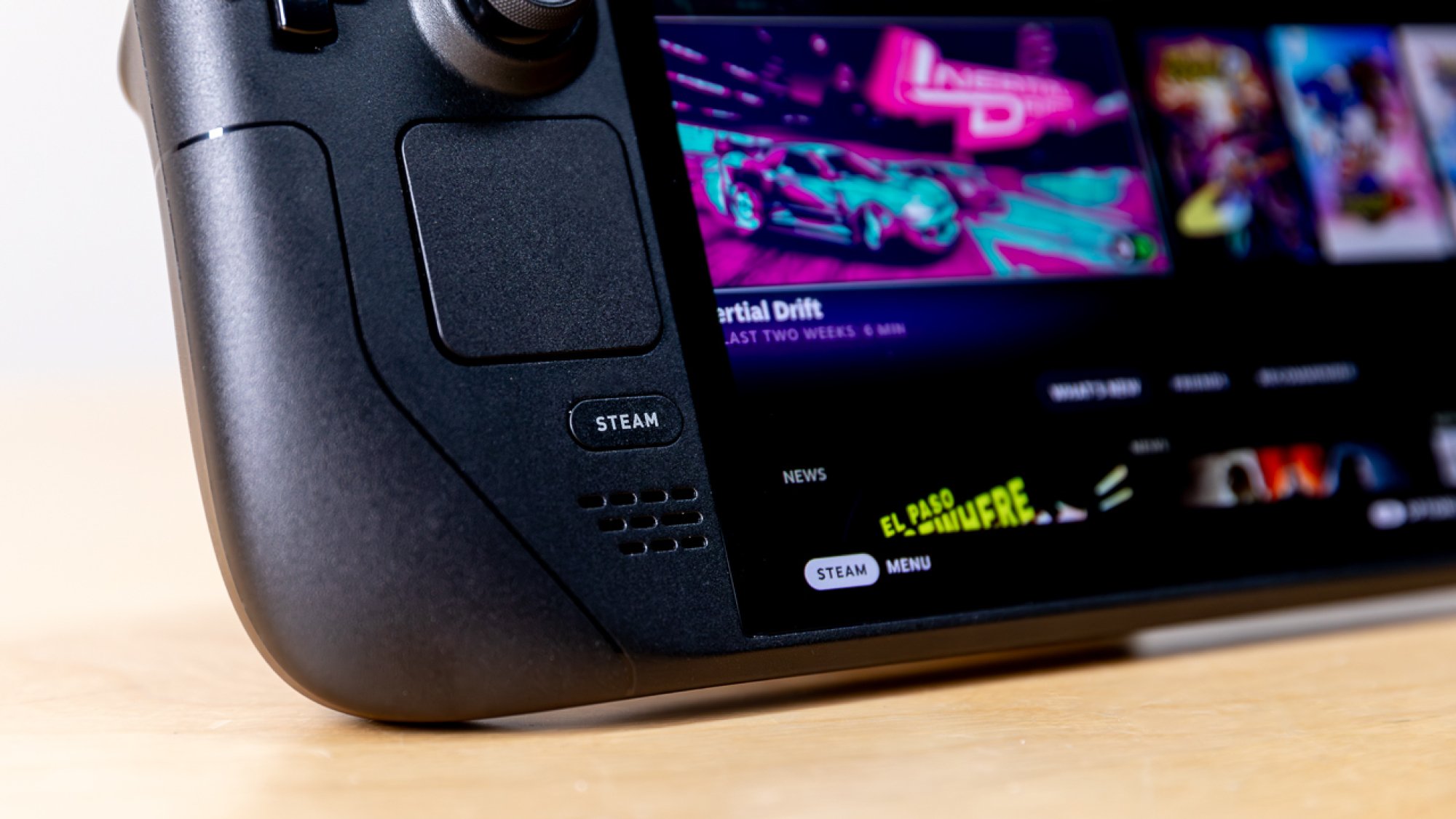
My only major gripe about Steam Deck OLED may not matter to you at all depending on your personal situation. Namely, it’s a good PC gaming experience, but not a premium one.
What I mean by that is a quality gaming PC will run modern AAA titles at at least 60 FPS, at much higher resolutions than 800p. Don’t get me wrong, it’s rad that there’s a handheld that can handle Cyberpunk 2077 and Baldur’s Gate 3 at relatively playable rates, but as a stickler for performance, I don’t really care to play games that oscillate between 30 FPS and 45 FPS.
But maybe this won’t matter to you because you don’t care that much about frame rates, or (like me) you have a current-gen console or desktop PC that can reliably run these games better than Steam Deck OLED. Personally, Steam Deck OLED is my “indie games and older big-budget games” machine, but if I didn’t already have another way to play modern AAA games, I’d be a little disappointed with how they run on Steam Deck.
There’s also the matter of games not being supported fully or, in some cases, at all on Steam Deck. You can’t play every Steam game on this thing, which is understandable, but a bit of a bummer nonetheless. The list of verified or playable games only grows by the day, though, so it’s not a huge deal. Still, if you want a true PC gaming experience, you should probably just build a PC.
What’s ‘eh’ about Steam Deck OLED
You gotta hack it to get off of Steam
If you want to play PC games from any marketplace other than Steam on this thing, you need to install Windows manually. Doing so requires technical know-how that I certainly don’t have, making it more difficult than you might expect to play games from the Epic Games Store or Xbox Game Pass on Steam Deck.
I don’t think this is a strike against Steam Deck OLED because it’s technically something you can bypass with some effort. As I mentioned earlier, SteamOS also does a good job of shielding the user from some of the BS that comes with working with PCs. It comes at a cost, but if you don’t want to deal with hacking a Steam Deck, you can just get the Lenovo Legion Go.
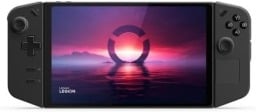
Steam Deck OLED battery life
The last improvement worth noting is that Valve upped the Steam Deck OLED’s battery to 50Whr, up from 40Whr battery. Valve estimates between 3 and 12 hours of gameplay with this new battery, but I gotta be honest: I have no idea how you’re supposed to get anywhere near 12 hours out of the Steam Deck OLED.
That doesn’t mean the battery is laughably bad or anything. Playing a variety of 2D and 3D games from across the last 20 years, I averaged out to about three and a half hours on a full charge. You can probably get more by lowering screen brightness or refresh rate (or simply playing less demanding games). But on default settings, this is not a particularly long-lasting device.
Final thoughts
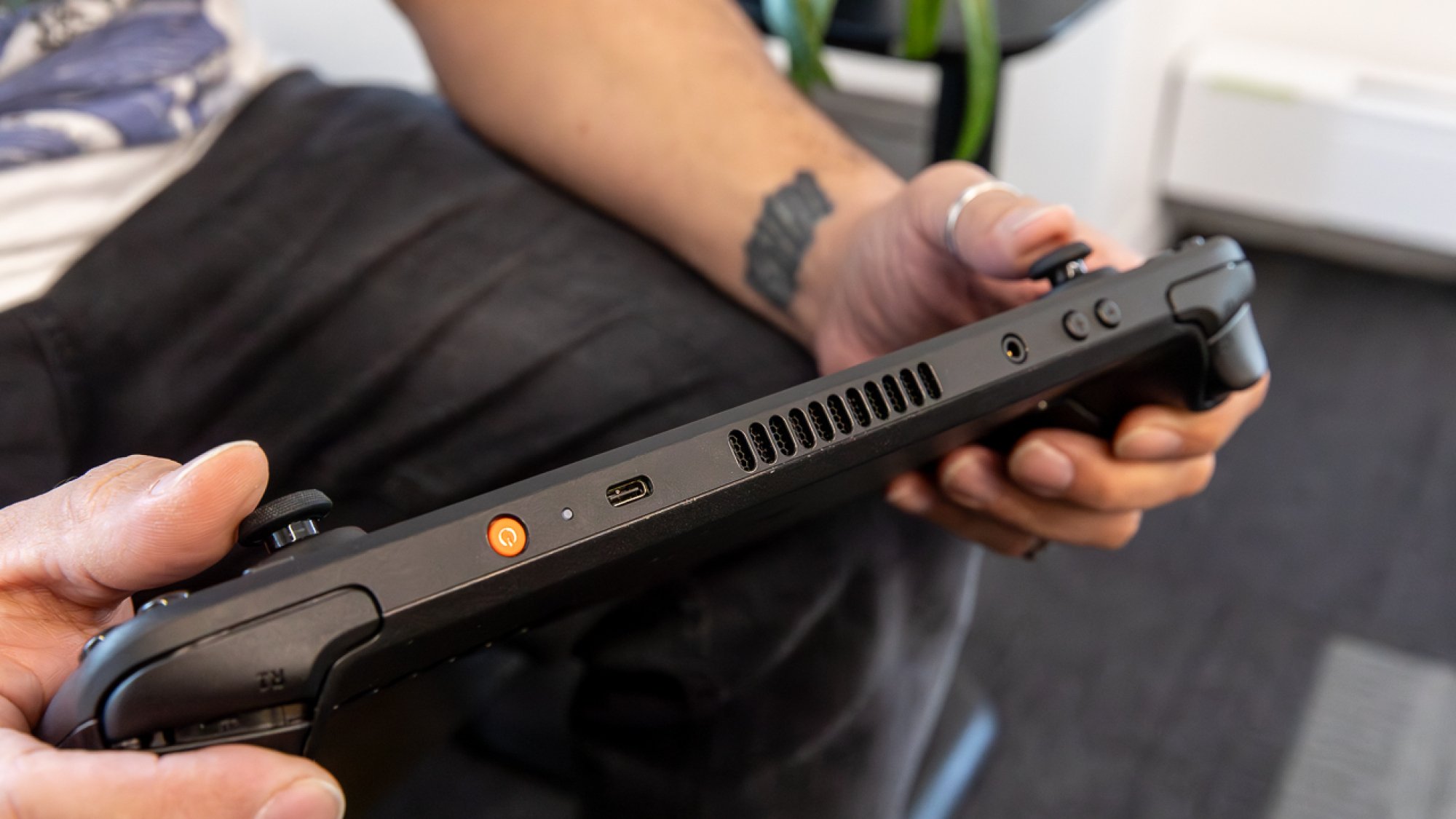
After hearing about how great the Steam Deck is from friends over the last 18 months, getting the Steam Deck OLED in my hands finally made all of that make sense.
Without beating around the bush, this is a great little handheld gaming PC that can impressively handle a lot of what you throw at it. Its performance profile isn’t substantially different from the LCD model, but there are so many small upgrades that this feels like a worthy revision.
A better battery and display, combined with a quieter fan, make the Steam Deck OLED my personal choice for the best handheld PC.

